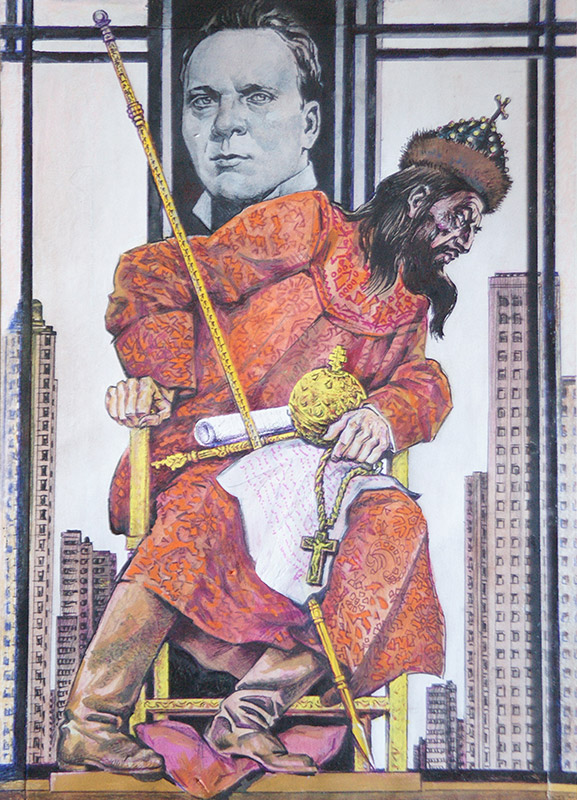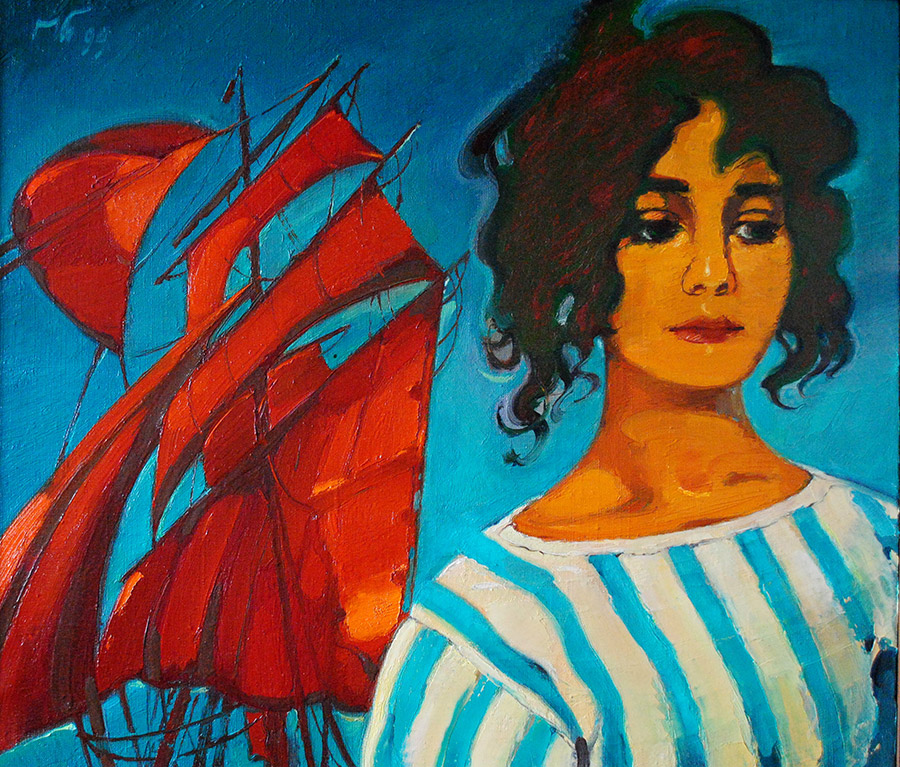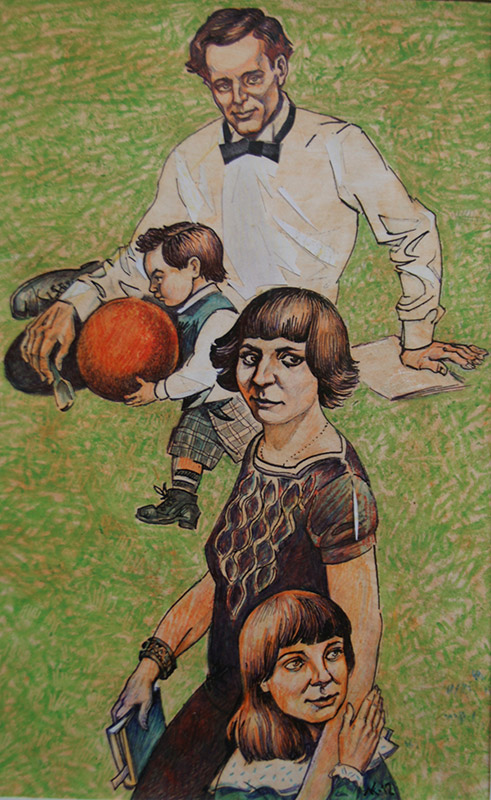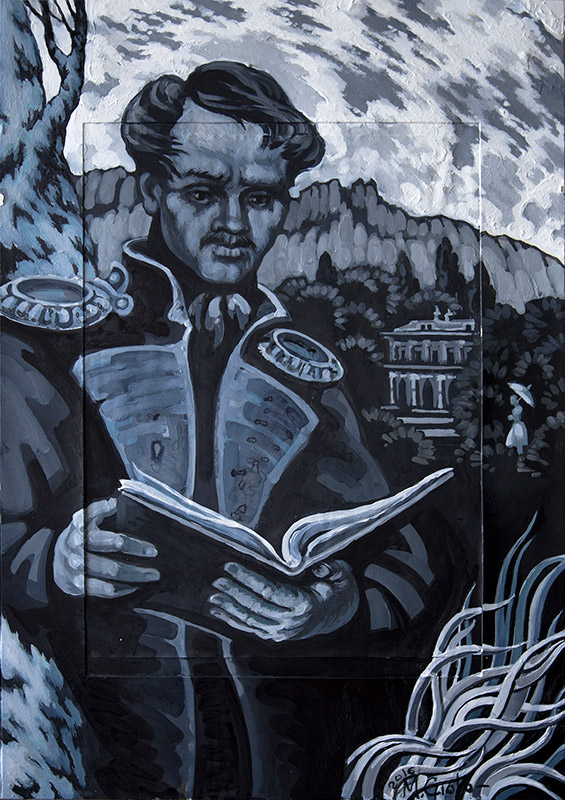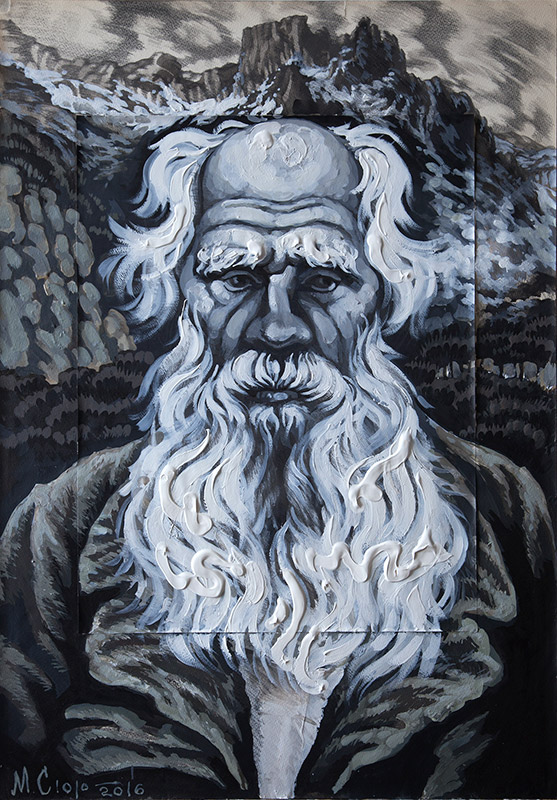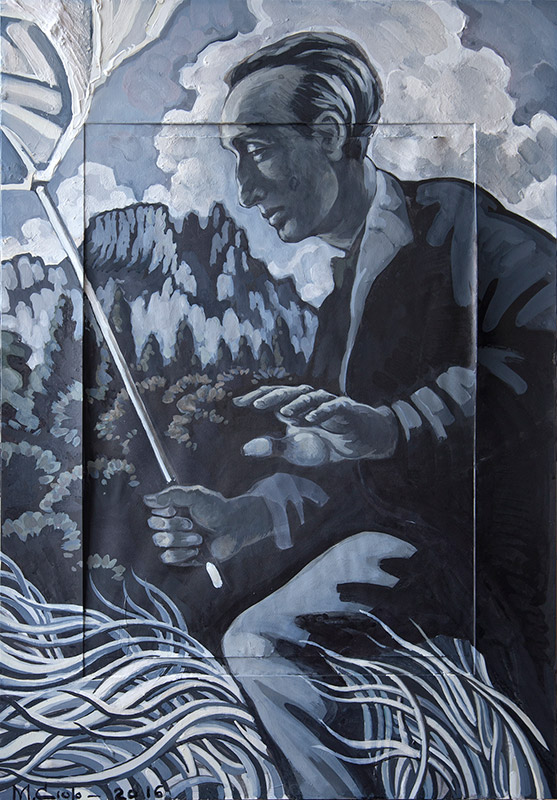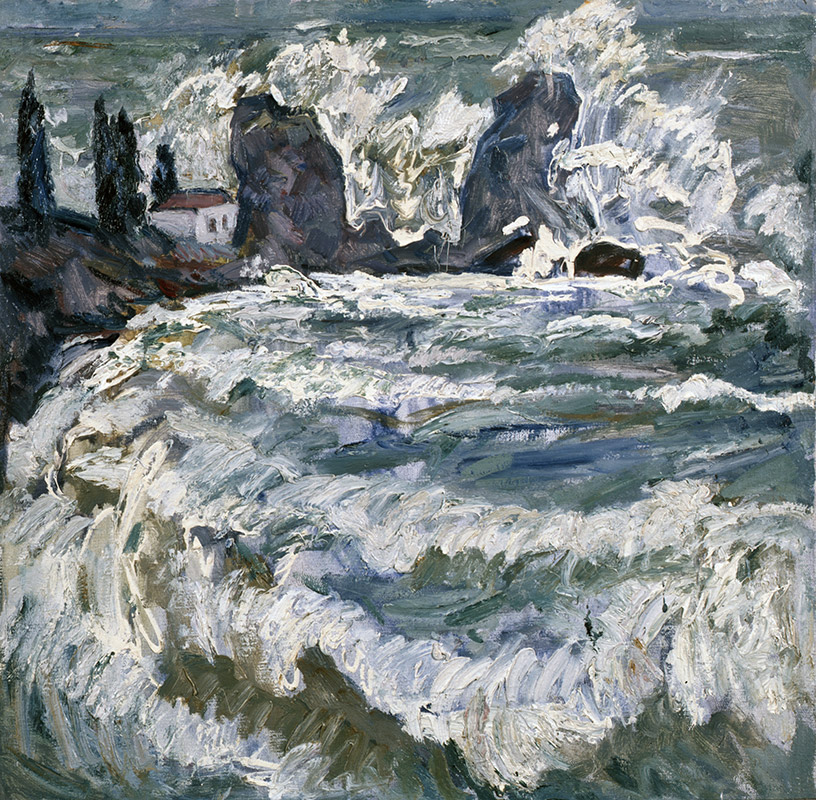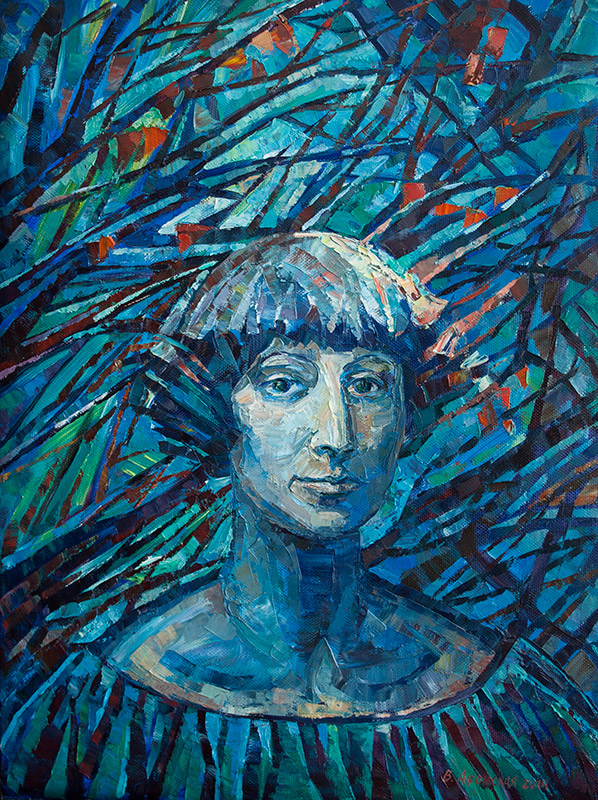With assistance of the Creative Union of Artists of Russia
Exhibition "The Russian Literature and Crimea"
Marina Tsvetaeva's House museum, from July 30 – to August 14, 2016
Opening of an exhibition on July 30, 2016 at 16:00
Participants of the exhibition:
National artist of Russia Gennady Sevostyanov, artist and sculptor Dmitry Zhilov; Honored artists of Russia: Gennady Zhivotov, Valery Ryabovol, Nikolay Chibisov, sculptor Ivan Korzhev; artists: Raisa Arefyeva, Sergey and Victoria Afonskiye, Pavel Borisov, Tatyana Gorelova, Leonid Kozlov, Natalia Nedelkina and Margarita Siourina, icon painter Lyudmila Chibisova and sculptor Vladimir Chibisov.
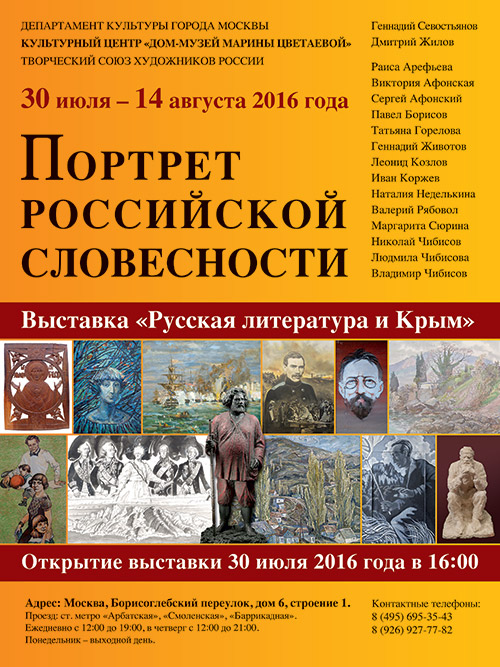
PRESS RELEASE
These limits are fine that,
That once towards evening
Pushkin has had a look at them from the ship,
On the way to Gurzuf...
Maksimilian Voloshin
The third season of the art project "The Portrait of the Russian Fine Word" opens as an exposition "The Russian Literature and Crimea" on July 30, 2016 in Marina Tsvetaeva's House museum (Borisoglebsky Lane, bld. 6). In chamber halls of the museum participating artists of the project will present portrait gallery of the Russian poets, writers and cultural figures whose destinies and creativity are inseparably linked with the ancient earth of the Crimean peninsula. They are connected inseparably, but in very different ways: Maksimilian Voloshin built the house here which became not only surprisingly creative, but also saving place for many people of domestic culture in dashing times, with enthusiasm and faithfully wrote the Crimea with the word and a brush; and Vladimir Nabokov was absolutely young here and forever left Russia, having sailed away from the Crimean coast on the vessel "Hope" on April 15, 1919. He was there not for long, but had written the poem "The Crimea" (1920) surprisingly fine and delicate in color poem, the remarkable cycle of early poems on the Crimea and each reader familiar with works of the brilliant writer will find echoes of the Crimean images in Nabokov's creativity – from the story "Mashenka" to novels "Pnin" and "Other Coasts".
Anton Pavlovich Chekhov lived and created in Gurzuf and Yalta, creating a number of immortal characters, and Anna Andreevna Akhmatova only was in Sevastopol in youth, refusing to row on water walks along with all; Fyodor Ivanovich Shalyapin sang on a visit at the prince Lev Nikolaevich Golitsyn - in the well-known grotto of the New World for the last Russian Sovereign-emperor and his family, and Alexander Kuprin wrote "Lestrigon’s" - about Balaklava and local fishermen.
Alexander Green created there his romantically sublime world woven from the wind, waves and sails, and Osip Mandelstam created a sad and even scary poem "The Old Crimea" and critique articles on misinterpretation in documentary Soviet cinema of a role of the Crimean Tatar people in the history of the peninsula. There in Koktebel at Max Voloshin's Marina Tsvetaeva and Sergej Efron got acquainted; there, in Alupka, Alexander Sergeyevich Pushkin received as a gift from the countess Elizabeth Ksaveryevna Vorontsova an ancient carnelian Karaite ring – sung by the poet a famous mascot which protected him until his last days.
There Lev Nikolaevich Tolstoy mostly shaped his creative vision – from the seen terrible pictures of war during the defense of Sevastopol ("The Sevastopol stories") to ingenious philosophical judgment of this subject in the novel "War and Peace". Lev Tolstoy stayed at the countess Sofya Panina's and in the last years of his life – the seriously ill Russian genius arrived to Gaspra in the fall of 1901 where he spent nine months and several times was at the point of death – and tendless telegrams were sent to Yalta from all the countries of the world: "What about Tolstoy?." Exactly there, at the bottom of apostolic Crimean top Ai-Petri (Saint Peter) he wrote then the well-known letter to the Sovereign-emperor beginning with the words of the apostolic message: "Dear brother..."
Traditionally in domestic literature it is considered that Mikhail Yuryevich Lermontov never was in the Crimea; however, there was a literary mystification of Pavel Petrovich Vyazemsky published by him in 1887 in the Russian Archive magazine - letters of the French poetess Adele Omer de Guell. According to this source Lermontov and Adele visited Naryshkin-Shuvalov's estate in Miskhore in 1840 where the poet wrote poetic dedication to Adele in French in the well-known park "Sofiyevka" under... a birch. The birch really grew in park, "Adele's Letters" were written so convincingly – with the detailed description of Simeiz, Alupka, Miskhora, - that contemporaries accepted the publication for an honest truth. In the 1930th years "the miskhorsky myth" was discredited, however the 1980th years justification of mystification of Vyazemsky is considered, in particular, Lermontov's biographer Emma Gerstein spoke indirect certificates (letters, diaries) of secret appearance of Mikhail Lermontov in Miskhore.
All this, multiplied by author's vision of a subject by each participating artist, expects the visitor of the exhibition "The Russian Literature and Crimea" in the museum of Marina Tsvetaeva from July 30 to August 14, 2016. With obligatory participation at our exhibitions of images of saints – in the Crimea the Holy Prince Vladimir accepted Epiphany, from the ancient Christian tradition imparted once to Taurian lands by Holy Apostle Andrew Pervozvanny. There will be also covered subject of the Crimean archaic just going back to an apostolic era when the influence of Ancient Greece on culture of Taurida was considerable – as well as its influence on forming of Ancient Russian culture.
All this, multiplied by author's vision of a subject by each participating artist, expects the visitor of the exhibition "The Russian Literature and Crimea" in the museum of Marina Tsvetaeva from July 30 to August 14, 2016. With obligatory participation at our exhibitions of images of saints – in the Crimea the Holy Prince Vladimir accepted Epiphany, from the ancient Christian tradition imparted once to Taurian lands by Holy Apostle Andrew Pervozvanny. There will be also covered subject of the Crimean archaic just going back to an apostolic era when the influence of Ancient Greece on culture of Taurida was considerable – as well as its influence on forming of Ancient Russian culture.
At the opening ceremony of the exhibition "The Russian Literature and Crimea" modern Russian poets of assoctiation DOOS ('Voluntary Society For Protection of Dragonflies') – led by the poet Konstantin Kedrov - will submit the poetic creative program. Konstantin Kedrov and Elena Katsyuba will present a new journal number of "Poets" devoted to the Crimea where they annualy visit literary festivals. In this season our constant participating poets of DOOS will appear before the visitor and in the exposition – several portraits are devoted to the contemporaries reading and writing in the Crimea. And, of course, at the exhibition "The Russian Literature and Crimea" there will be our invariable and constant dedication to Marina Tsvetaeva – ciphered by movement of a brush in sea landscapes and in blossoming of almond trees that mysteriously and surprisingly precisely determines the subject initially and, who knows, perhaps that it is - forever...
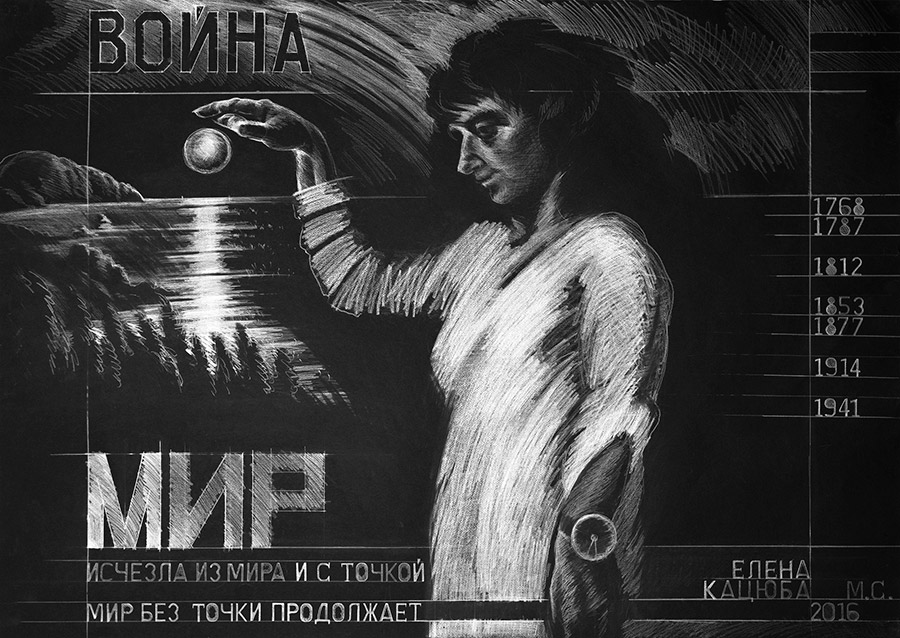
Margarita Siourina. The poet Elena Katsyuba. The letter i with the point. 2016

